Theme Parks & Themed Entertainment
Abraham Lincoln is Here to Stay – Walt’s Disneyland Attraction That “Can’t” Be Replaced
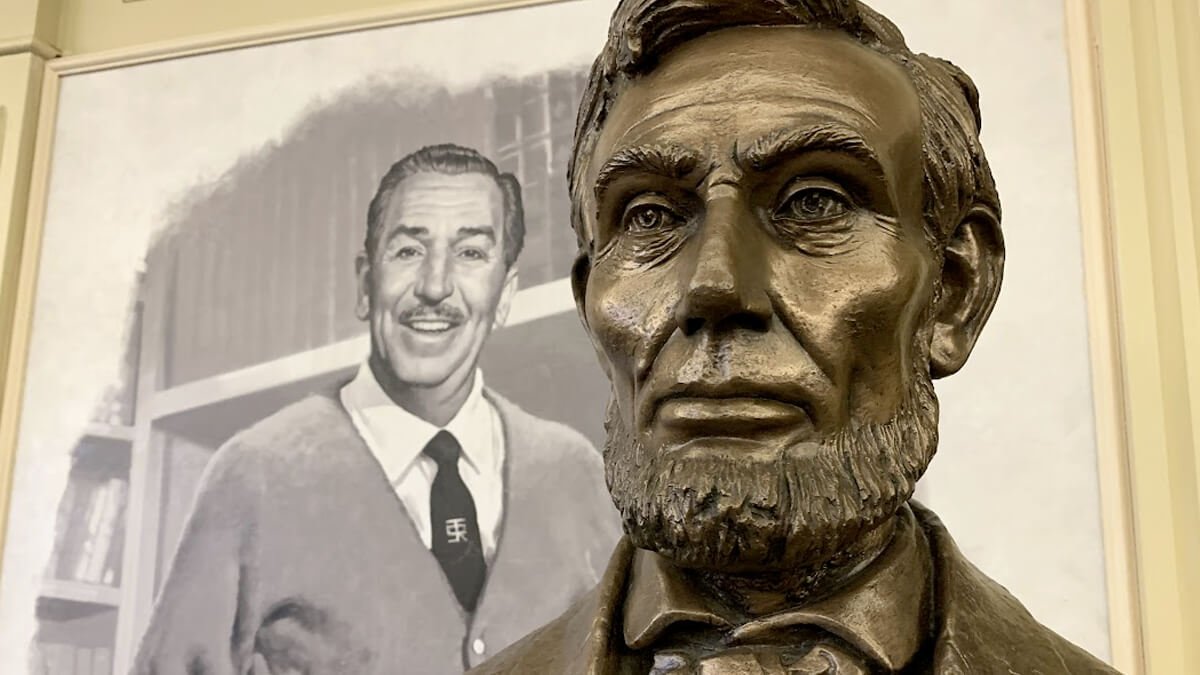
Happy Presidents Day. Which is when we – as Americans – are supposed to honor the memory of two of our country’s commanders-in-chief: George Washington (born on February 22, 1732) and Abraham Lincoln (born February 12, 1809).
Walt Disney and Abraham Lincoln
Walt Disney was a life-long admirer of Honest Abe. Walt often told the tale of how – back when he was a kid – Disney fashioned a stove pipe hat & a fake beard for himself (supposedly made out of poster paper). Then – dressed in this outfit — Disney stood in front of his grade class and recited Lincoln’s Gettysburg address from memory.
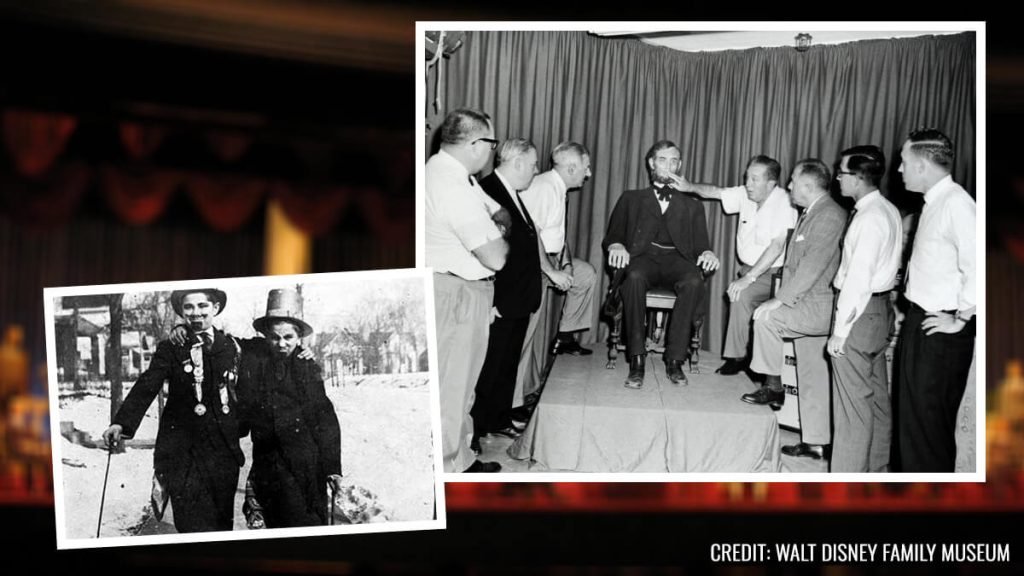
Walt’s obvious affection & admiration for our 16th President continued well into his adulthood. Which explains “Great Moments with Mr. Lincoln,” an attraction that the Imagineers originally created for the 1964 – 1965 New York World’s Fair which was built around an Audio Animatronic version of Abraham Lincoln.
This robotic Lincoln caused such a sensation among visitors to Flushing Meadows that – even before this edition of the New York World’s Fair ended on October 15, 1965 – Walt had a second version of “Great Moments with Mr. Lincoln” built. Which he then had installed inside of the Main Street Opera House at Disneyland Park.
Disneyland’s “Great Moments with Mr. Lincoln”
This second version of “Great Moments with Mr. Lincoln” opened on July 18, 1965. But the West Coast clone of this New York World’s Fair show never quite caught on the way that the East Coast original had. Even when Disneyland began giving away a free pass to this Main Street, U.S.A. attraction with every ticket book sold to Guests, the Californian version of “Great Moments” failed to capture even a tenth of the people who visited this theme park annually.
And given that the Main Street Opera House was this 500-seat venue right up by the entrance of Walt’s family fun park, it made the Imagineers crazy that this beautifully appointed / centrally located theater would only have a handful of people inside at most performances of “Great Moments with Mr. Lincoln.”
Which is why – after Walt passed away in December of 1966 – WDI began quietly casting around for show ideas that they could possibly use as replacements for the seriously under-performing “Great Moments.”
Walt Disney Replaces “Great Moments”
Ironically, it was Walt himself who provided the solution to Anaheim’s “Great Moments” problem. As part of Walt Disney Productions’ 50th anniversary celebration, the Imagineers mounted “The Walt Disney Story” inside of the Main Street Opera House. This exhibit (which featured a lobby filled with the awards that Walt had won over his lifetime as well as a film which then looked back at Disney’s career) necessitated the closing of Disneyland’s “Great Moments with Mr. Lincoln.”
Which did NOT sit well with the good folks of Orange County. This corner of Southern California is known nationwide as a conservative stronghold. Which is why – when these folks learned that the April 8, 1973 opening of “The Walt Disney Story” at Disneyland meant that that theme park’s robotic version of Honest Abe would now go into storage – these people began bombarding the Mouse House with angry phone calls & letters.
“The Walt Disney Story featuring Great Moments with Mr. Lincoln”
Which is why — less than two years into the run of “The Walt Disney Story” at Disneyland Park – the Company caved. The Main Street Opera House closed its doors on February 12, 1975 and began yet another revamping. Some four months later, this 500-seat venue re-opened with what can politely be described as something of a camel of an attraction: “The Walt Disney Story featuring Great Moments with Mr. Lincoln.”
The way that this retooled version of this Main Street, U.S.A. attraction worked was … Well, the lobby area of the Main Street Opera House now celebrated the life & career of Walt Disney. Whereas once Guest entered the actual theater portion of Disneyland’s opera house … This was where the “Great Moments with Mr. Lincoln” show from the 1964 – 1964 New York World’s Fair was now framed in such a way that this AA-based attraction was supposed to be seen as one of Walt’s greatest achievements. This technological triumph that then paid tribute to our 16th president.
This creative compromise may have addressed many of the concerns that Southern Californian conservatives had (not to mention quelling a lot of the complaints that had been coming out of Orange County). But it also frustrated Disneyland managers as well as the Imagineers.
“And why was that?,” you ask. Because the revised “Walt Disney Story featuring Great Moments with Mr. Lincoln” hadn’t solved the Main Street Opera House’s attendance problem. This nearly-10-year-old attraction was now even less popular with Disneyland visitors. Fewer than 1-in-20 Guests now bothered to check out this show during their day at the Park.
Bringing “Hall of Presidents” to Disneyland
What especially made the Imagineers crazy about Mr. Lincoln’s return to the Main Street Opera House is that this development then derailed their plans to bring Disney World’s “Hall of Presidents” to Anaheim.
How many of you remember the “Disneyland Presents a Preview of Coming Attractions” display that used to be on Main Street, U.S.A.? This collection of models & concept art was housed inside of that theme park’s old Wurlitzer Music Hall building. And from 1973 to 1989, Guests could drop by here for free and then check out some of the rides, shows & attractions that the Imagineers were considering for construction in Anaheim.
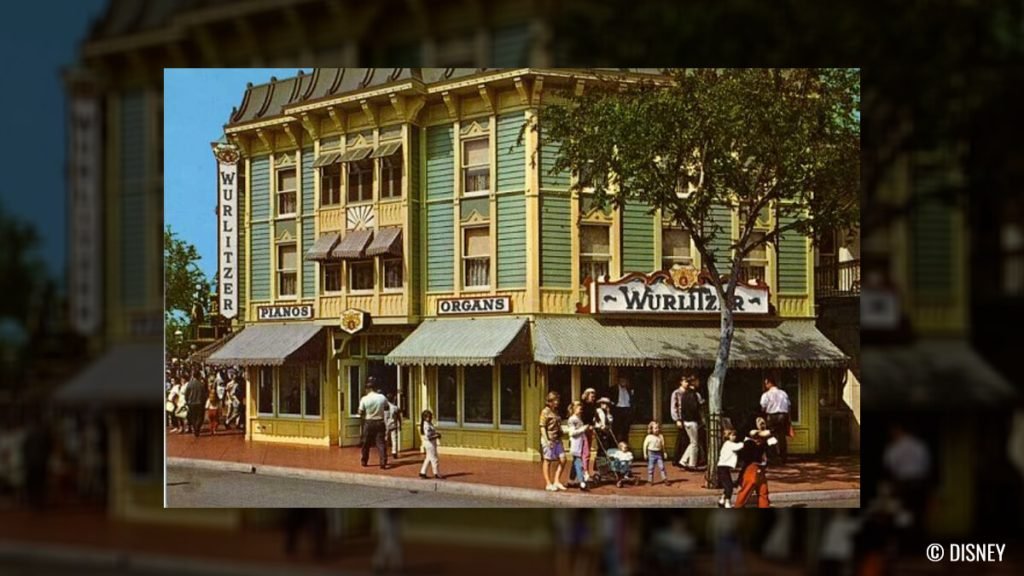
And among those ideas was a West Coast version of WDW’s “Hall of Presidents.” Which – if all had gone according to plan – was to have opened at Disneyland Park just in time for the Summer of 1976 (i.e., America’s bicentennial).
But what with the good folks of Orange County insisting on “Great Moments with Mr. Lincoln” ‘s return to the Main Street Opera House ASAP back in 1973, that idea was now off the table. Which is why – instead of a West Coast version of WDW’s “Hall of Presidents” – Disneyland got another patriotic, Audio Animatronic-filled show out ahead of America’s bicentennial. And that located-in-Tomorrowland attraction was “America Sings,” which opened at Disneyland Park on June 29, 1974.
Meanwhile, attendance levels for the “Walt Disney Story featuring Great Moments with Mr. Lincoln” show continued to erode (Now fewer than 1-in-50 visitors bothered to swing by the Main Street Opera House to check out that show during their day in the Park). The Imagineers tried to use cutting edge-tech as a reason to lure people back to this under-attended attraction. Which is why — in 1984 — they installed an all-new Lincoln in this theater that (at that time, anyway) was the most sophisticated Animatronic figure ever built for a Disney park. It didn’t matter. People still stayed away.
“MuppetVision 3D” to Replace “Great Moments” at Disneyland
Which brings us to the Summer of 1990. Prior to his tragic passing on May 16th of that year, Jim Henson had completed production of “MuppetVision 3D.” Then-Disney CEO Michael Eisner wanted to honor his friend’s memory by having “MuppetVision 3D” open at Disney theme parks on both coasts in the Spring of 1991.
Down in Florida, “Kermit the Frog presents MuppetVision 3D” would be shown inside of a purpose-built theater at Disney-MGM Studios. Whereas the West Coast version of this attraction … Well, by now, attendance levels for “The Walt Disney Story featuring Great Moments with Mr. Lincoln” had fallen straight through the floor. Only 1-out-of-a-100 Guests ever bothered to drop by the Main Street Opera house. And even with that new cutting-edge Lincoln AA figure (which made use of the very same tech that powered the Wicked Witch of the West AA figure in “The Great Movie Ride” at Disney-MGM Studios theme park) on display, this seriously-under-attended show often experienced walk-outs.
Which is why the Imagineers now wanted to install “Kermit the Frog presents MuppetVision 3D” in the Main Street Opera House at Disneyland. Given that the theater that the Imagineers were building in Florida was to have 564 seats and the one that already existed in Anaheim had 500 seats … These two venues for “MuppetVision 3D” basically had the same hourly capacity.
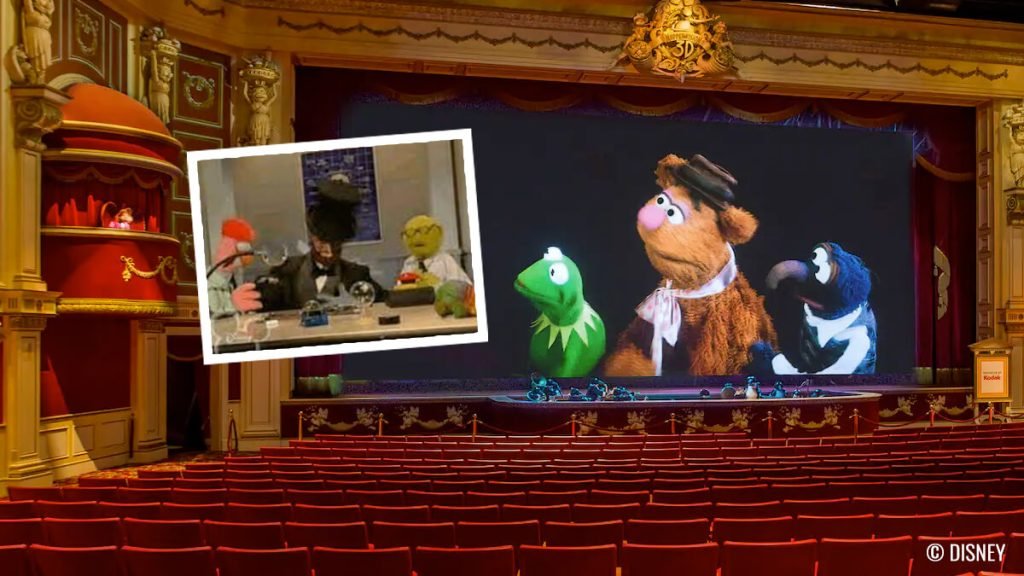
So the plan was that “The Walt Disney Story featuring Great Moments with Mr. Lincoln” was to quietly close after the Labor Day Weekend in 1990. Then the Imagineers would retool the Main Street Opera House both inside & out so that it would then be a suitable venue for the Muppets. The Imagineers were already inside of this Main Street, U.S.A. taking measurements for this proposed redo when these plans then went off the rails.
Abe Lincoln to Stay
You see – on August 19, 1990 – news broke about this upcoming redo of the Main Street Opera House. Both the Orange County Register & the Los Angeles Times ran stories about this proposed show swap. And while Disneyland spokesman Bob tried to put things in the best possible light, insisting that this Disneyland theater would soon receive a floor-to-ceiling refurbishment, that this venue would look better than it had in years, Orange County conservatives would have none of this. In a large way, it was 1973 all over again. They quickly flooded the Company’s switchboards with thousands of angry phone calls.
And within one week’s time, the Los Angeles Times actually ran an article with this headline:
“Abe Lincoln to Stay, Kermit the Frog Hops Away”
Will Disneyland’s “Great Moments with Mr. Lincoln” Ever Get Replaced?
And since then … Well, while the Imagineers still periodically make an attempt at sprucing up Disneyland’s “Great Moments with Mr. Lincoln” show (How many of you remember that god-awful binaural sound version of this attraction which debuted in Anaheim back in July of 2001? That version — which featured a 3D haircut as well as Honest Abe seeming to bend over & whisper into Guests’ ears – earned the comical nickname, “Creepy Moments with Mr. Lincoln.” It was quietly shuttered in February of 2005) … Nowadays, the “Great Moments with Mr. Lincoln” show at Disneyland Park is considered untouchable.
Whenever the Imagineers have tried in the past to put a different show in this space at that theme park, Orange County conservatives have risen up in force. And as a direct result, the Main Street Opera is one of the most under-utilized facilities at Disneyland Park. Last I heard, the average attendance for a presentation of this Audio Animatronic show is 30 people.
But on the other hand, if you’re looking for something to do at Disneyland and you happen to be headed there on Presidents Day Weekend … Well, there’s one place at that theme park where I can guarantee you that you won’t encounter a line.
Theme Parks & Themed Entertainment
Disney and Macy’s 90-Year Thanksgiving Day Parade Partnership: From Mickey’s First Balloon to Minnie’s Big Debut

Now, folks, if you’re like me, Thanksgiving just wouldn’t be the same without a coffee, a cozy seat, and Macy’s Thanksgiving Day Parade on the TV. And if you’re really like me, you’re watching for one thing: Disney balloons floating down 34th Street. Ever wondered how Mickey, Donald, and soon Minnie Mouse found their way into this beloved New York tradition? Well, grab your popcorn because we’re diving into nearly 90 years of Disney’s partnership with Macy’s.
The Very First Parade and the Early Days of Balloons
The Macy’s Thanksgiving Day Parade goes way back to 1924, but if you can believe it, balloons weren’t part of the festivities until 1927. That first lineup included Felix the Cat, a dragon, and a toy soldier, all towering above the crowds. Back then, Macy’s had a pretty wild idea to end the parade: they would let the balloons drift off into the sky, free as birds. But this wasn’t just Macy’s feeling generous. Each balloon had a message attached, offering a $100 reward (about $1,800 in today’s dollars) for anyone who returned it to the flagship store on 34th Street.
And here’s where it gets interesting. This tradition carried on for a few years, right up until 1932, when Felix the Cat almost took down a plane flying over New York City! Imagine that—you’re flying into LaGuardia, and suddenly, there’s a 60-foot balloon drifting toward your wing. Needless to say, that was the end of Macy’s “fly away” stunt, and from then on, the balloons have stayed firmly grounded after the parade ends.

1934: Mickey Mouse Floats In, and Disney Joins the Parade
It was 1934 when Mickey Mouse finally made his grand debut in the Macy’s parade. Rumor has it Walt Disney himself collaborated with Macy’s on the design, and by today’s standards, that first Mickey balloon was a bit of a rough cut. This early Mickey had a hotdog-shaped body, and those oversized ears gave him a slightly lopsided look. But no one seemed to mind. Mickey was there, larger than life, floating down the streets of New York, and the crowd loved him.
Mickey wasn’t alone that year. He was joined by Pluto, Horace Horsecollar, and even the Big Bad Wolf and Practical Pig from The Three Little Pigs, making it a full Disney lineup for the first time. Back then, Disney wasn’t yet the entertainment powerhouse we know today, so for Walt, getting these characters in the parade meant making a deal. Macy’s required its star logo to be featured on each Disney balloon—a small concession that set the stage for Disney’s long-standing presence in the parade.
Duck Joins and Towers Over Mickey
A year later, in 1935, Macy’s introduced Donald Duck to the lineup, and here’s where things got interesting. Mickey may have been the first Disney character to float through the parade, but Donald made a huge splash—literally. His balloon was an enormous 60 feet tall and 65 feet long, towering over Mickey’s 40-foot frame. Donald quickly became a fan favorite, appearing in the lineup for several years before being retired.
Fast-forward a few decades, and Donald was back for a special appearance in 1984 to celebrate his 50th birthday. Macy’s dug the balloon out of storage, re-inflated it, and sent Donald down 34th Street once again, bringing a bit of nostalgia to the holiday crowd.
A Somber Parade in 2001
Now, one of my most memorable trips to the parade was in 2001, just weeks after the 9/11 attacks. Nancy and I, along with our friends, headed down to New York, and the mood was something I’ll never forget. We watched the start of the parade from Central Park West, but before that, we went to the Museum of Natural History the night before to see the balloons being inflated. They were covered in massive cargo nets, with sandbags holding them down. It’s surreal to see these enormous balloons anchored down before they’re set free.
That year, security was intense, with police lining the streets, and then-Mayor Rudy Giuliani rode on the Big Apple float to roaring applause. People cheered his name, waving and shouting as he passed. It felt like the entire city had turned out to show their resilience. Even amidst all the heightened security and tension, seeing those balloons—brought a bit of joy back to the city.

Balloon Prep: From New Jersey’s MetLife Stadium to California’s D23 Expo
Each year before the parade, Macy’s holds a rehearsal event known as Balloon Fest at MetLife Stadium in New Jersey. This is where handlers get their first crack at guiding the balloons, practicing with their parade masters, and learning the ropes—literally. It’s an entire production unto itself, with dozens of people rehearsing to make sure these enormous inflatables glide smoothly down the streets of New York on parade day.
In 2015, Macy’s took the balloon show on the road, bringing their Buzz Lightyear balloon out to California for the D23 Expo. I was lucky enough to be there, and watching Buzz get inflated piece by piece in the Anaheim Convention Center parking lot was something to behold. Each section was filled with helium in stages, and when they got around to Buzz’s lower half, well, there were more than a few gas-related jokes from the crowd.
These balloons seem to have a personality all their own, and seeing one like Buzz come to life up close—even outside of New York—had all the excitement and anticipation of the real deal.

Mickey’s Comeback as a Bandleader and Sailor Mickey
After a long hiatus, Mickey Mouse made his return to the Macy’s parade in 2000, this time sporting a new bandleader outfit. Nine years later, in 2009, Sailor Mickey joined the lineup, promoting Disney Cruise Line with a nautical twist. Over the past two decades, Disney has continued to enchant parade-goers with characters like Buzz Lightyear in 2008 and Olaf from Frozen in 2017. These balloons keep Disney’s iconic characters front and center, drawing in both longtime fans and new viewers.
But ever wonder what happens to the balloons after they reach the end of 34th Street? They don’t just disappear. Each balloon is carefully deflated, rolled up like a massive piece of laundry, and packed into storage bins. From there, they’re carted back through the Lincoln Tunnel to Macy’s Parade Studio in New Jersey, where they await their next flight.

Macy’s Disney Celebration at Hollywood Studios
In 1992, Macy’s took the spirit of the parade down to Disney-MGM Studios in Orlando. After that year’s parade, several balloons—including Santa Goofy, Kermit the Frog, and Betty Boop—were transported to Hollywood Studios, re-inflated, and anchored along New York Street as part of a holiday display. Visitors could walk through this “Macy’s New York Christmas” setup and see the balloons up close, right in the middle of the park. While this display only ran for one season, it paved the way for the Osborne Family Spectacle of Dancing Lights, which became a holiday staple at the park for years to come.

Minnie Mouse’s Long-Awaited Debut in 2024
This year, Minnie Mouse will finally join the parade, making her long-overdue debut. Macy’s is rolling out the red carpet for Minnie’s arrival with special pop-up shops across the country, where fans can find exclusive Minnie ears, blown-glass ornaments, T-shirts, and more to celebrate her first appearance in the Thanksgiving Day Parade.

For those lucky enough to catch the parade this year, you’ll see Minnie take her first float down 34th Street, decked out in her iconic red bow and polka-dot dress. Macy’s and Disney are also unveiling a new Disney Cruise Line float honoring all eight ships, including the latest, the Disney Treasure.
As always, I’ll be watching from my favorite chair, coffee in hand, as Minnie makes her grand entrance. The 98th annual Macy’s Thanksgiving Day Parade airs live on NBC, and it’s a tradition you won’t want to miss—whether you’re on 34th Street or tuning in from home.
Theme Parks & Themed Entertainment
Disney’s Forgotten Halloween Event: The Original Little Monsters on Main Street

When most Disney fans think of Halloween in the parks, they immediately picture Mickey’s Not-So-Scary Halloween Party at Walt Disney World or the Oogie Boogie Bash at Disneyland Resort. But before those events took over as the must-attend spooky celebrations, there was a little-known event at Disneyland called Little Monsters on Main Street. And its origins? Well, they go all the way back to the 1980s, during a time when America was gripped by fear—the Satanic Panic.

You see, back in the mid-1980s, parents were terrified that Halloween had become dangerous. Urban legends about drug-laced candy or razor blades hidden in apples were widespread, and many parents felt they couldn’t let their kids out of sight for even a moment. Halloween, which was once a carefree evening of trick-or-treating in the neighborhood, had suddenly become a night filled with anxiety.
This is where Disneyland’s Little Monsters on Main Street came in.

The Origins of Little Monsters on Main Street
Back in 1989, the Disneyland Community Action Team—later known as the VoluntEARS—decided to create a safe, nostalgic Halloween experience for Cast Members and their families. Many schools in the Anaheim area were struggling to provide basic school supplies to students, and the VoluntEARS saw an opportunity to combine a safe Halloween with a charitable cause. Thus, Little Monsters on Main Street was born.
This event was not open to the general public. Only Disneyland Cast Members could purchase tickets, which were initially priced at just $5 each. Cast Members could bring their kids—but only as many as were listed as dependents with HR. And even then, the park put a cap on attendance: the first event was limited to just 1,000 children.

A Unique Halloween Experience
Little Monsters on Main Street wasn’t just another Halloween party. It was designed to give kids a safe, fun environment to enjoy trick-or-treating, much like the good old days. On Halloween night in 1989, kids in costume wandered through Disneyland with their pillowcases, visiting 20 different trick-or-treat stations. They also had the chance to ride a few of their favorite Fantasyland attractions, all after the park had closed to the general public.
The event was run entirely by the VoluntEARS—about 200 of them—who built and set up all the trick-or-treat stations themselves. They arrived at Disneyland before the park closed and, as soon as the last guest exited, they began setting up stations across Main Street, Adventureland, Frontierland, Fantasyland, and Tomorrowland. The event ran from 7:30 to 9:30 p.m., and by the time the last pillowcase-wielding kid left, the VoluntEARS cleaned everything up, making sure the park was ready for the next day’s operations.
It wasn’t just candy and rides, though. The event featured unique entertainment, like a Masquerade Parade down Main Street, U.S.A., where kids could show off their costumes. And get this—Disneyland even rigged up a Cast Member dressed as a witch to fly from the top of the Matterhorn to Frontierland on the same wire that Tinker Bell uses during the fireworks. Talk about a magical Halloween experience!
The Haunted Mansion “Tip-Toe” Tour
Perhaps one of the most memorable parts of Little Monsters on Main Street was the special “tip-toe tour” of the Haunted Mansion. Now, Disneyland’s Haunted Mansion can be a pretty scary attraction for younger kids, so during this event, Disney left the doors to the Stretching Room and Portrait Gallery wide open. This allowed kids to walk through and peek at the Haunted Mansion’s spooky interiors without actually having to board the Doom Buggies. For those brave enough to ride, they could, of course, take the full trip through the Haunted Mansion—or they could take the “chicken exit” and leave, no harm done.

Growing Success and a Bigger Event
Thanks to the event’s early success, Little Monsters on Main Street grew in size. By 1991, the attendance cap had been raised to 2,000 kids, and Disneyland added more activities like magic shows and hayrides. They also extended the event’s hours, allowing kids to enjoy the festivities until 10:30 p.m.
In 2002, the event moved over to Disney California Adventure, where it could accommodate even more kids—up to 5,000 in its later years. The name was also shortened to just Little Monsters, since it was no longer held on Main Street. This safe, family-friendly Halloween event continued for several more years, with the last mention of Little Monsters appearing in the Disneyland employee newsletter in 2008. Though some Cast Members recall the event continuing until 2012, it eventually made way for Disney’s more public-facing Halloween events.

From Little Monsters to Mickey’s Not-So-Scary and Oogie Boogie Bash
Starting in the early 2000s, Disney began realizing the potential of Halloween-themed after-hours events for the general public. These early versions of Mickey’s Halloween Party and Mickey’s Halloween Treat eventually evolved into today’s Mickey’s Not-So-Scary Halloween Party and Oogie Boogie Bash. Unfortunately, this also marked the end of the intimate, Cast Member-exclusive Little Monsters event, but it paved the way for the large-scale Halloween celebrations we know and love today.
While it’s bittersweet to see Little Monsters on Main Street fade into Disney history, its legacy lives on through these modern Halloween parties. And even though Cast Members now receive discounted tickets to Mickey’s Not-So-Scary and Oogie Boogie Bash, the special charm of an event created specifically for Disney’s employees and their families remains something worth remembering.
The Merch: A Piece of Little Monsters History
For Disney collectors, the exclusive merchandise created for Little Monsters on Main Street is still out there. You can find pins, name tags, and themed pillowcases on sites like eBay. One of the coolest collectibles is a 1997 cloisonné pin set featuring Huey, Dewey, and Louie dressed as characters from Hercules. Other sets paid tribute to the Main Street Electrical Parade and Pocahontas, while the pillowcases were uniquely designed for each year of the event.

While Little Monsters on Main Street may be gone, it’s a fascinating piece of Disneyland history that played a huge role in shaping the Halloween celebrations we enjoy at Disney parks today.
Want to hear more behind-the-scenes stories like this? Be sure to check out I Want That Too, where Lauren and I dive deep into the history behind Disney’s most beloved attractions, events, and of course, merchandise!
Theme Parks & Themed Entertainment
The Story of Mickey’s Not-So-Scary Halloween Party: From One Night to a Halloween Family Tradition

The spooky season is already in full swing at Disney parks on both coasts. On August 9th, the first of 38 Mickey’s Not-So-Scary Halloween Party (MNSSHP) nights for 2024 kicked off at Florida’s Magic Kingdom. Meanwhile, over at Disney California Adventure, the Oogie Boogie Bash began on August 23rd and is completely sold out across its 27 dates this year.
Looking back, it’s incredible to think about how these Halloween-themed events have grown. But for Disney, the idea of charging guests for Halloween fun wasn’t always a given. In fact, when the very first Mickey’s Not-So-Scary Halloween Party debuted on October 31, 1995, it was a modest one-night-only affair. Compare that to the near month-long festivities we see today, and it’s clear that Disney’s approach to Halloween has evolved considerably.
A Not-So-Scary Beginning
I was fortunate enough to attend that very first MNSSHP back in 1995, along with my then 18-month-old daughter Alice and her mom, Michelle. Tickets were a mere $16.95 (I know, can you imagine?), and we pushed Alice around in her sturdy Emmaljunga stroller—Swedish-built and about the size of a small car. Cast Members, charmed by her cuteness, absolutely loaded us up with candy. By the end of the night, we had about 30 pounds of fun-sized candy bars, making that push up to the monorail a bit more challenging.

This Halloween event was Disney’s response to the growing popularity of Universal Studios Florida’s own Halloween hard ticket event, which started in 1991 as “Fright Nights” before being rebranded as “Halloween Horror Nights” the following year. Universal’s gamble on a horror-themed experience helped salvage what had been a shaky opening for their park, and by 1993, Halloween Horror Nights was a seven-night event, with ticket prices climbing as high as $35. Universal had stumbled upon a goldmine, and Disney took notice.
A Different Approach
Now, here’s where Disney’s unique strategy comes into play. While Universal embraced the gory, scare-filled world of horror, Disney knew that wasn’t their brand. Instead of competing directly with blood and jump-scares, Disney leaned into what they did best: creating magical, family-friendly experiences.
Thus, Mickey’s Not-So-Scary Halloween Party was born. The focus was on fun and whimsy, not fear. Families could bring their small children without worrying about them being terrified by a chainsaw-wielding maniac around the next corner. This event wasn’t just a Halloween party—it was an extension of the Disney magic that guests had come to expect from the parks.
Disney had some experience with seasonal after-hours events, most notably Mickey’s Very Merry Christmas Party, which had started in 1983. But the Halloween party was different, as the Magic Kingdom wasn’t yet decked out in Halloween decor the way it is today. Disney had to create a spooky (but not too spooky) atmosphere using temporary props, fog machines, and, of course, lots of candy.
A key addition to that first event? The debut of the Headless Horseman, who made his eerie appearance in Liberty Square, riding a massive black Percheron. It wasn’t as elaborate as the Boo-to-You Parade we see today, but it marked the beginning of a beloved Disney Halloween tradition.
A Modest Start but a Big Future
That first MNSSHP in 1995 was seen as a trial run. As Disney World spokesman Greg Albrecht told the Orlando Sentinel, “If it’s successful, we’ll do it again.” And while attendance was sparse that night, there was clearly potential. By 1997, the event expanded to two nights, and by 1999, Mickey’s Not-So-Scary Halloween Party had grown into a multi-night celebration with a full-fledged parade. Today, in 2024, it’s a staple of the fall season at Walt Disney World, offering 38 nights of trick-or-treating, character meet-and-greets, and special entertainment.
Universal’s Influence

It’s interesting to reflect on how Disney’s Halloween event might never have existed without the competition from Universal. Just as “The Wizarding World of Harry Potter” forced Disney to step up their game with “Star Wars: Galaxy’s Edge,” Universal’s success with Halloween Horror Nights likely spurred Disney into action with MNSSHP. The friendly rivalry between the two parks has continually pushed both to offer more to their guests, and we’re all better off because of it.
So the next time you find yourself trick-or-treating through the Magic Kingdom, watching the Headless Horseman gallop by, or marveling at the seasonal fireworks, take a moment to appreciate how this delightful tradition came to be—all thanks to a little competition and Disney’s commitment to creating not-so-scary magic.
For more Disney history and behind-the-scenes stories, check out the latest episodes of the I Want That Too podcast on the Jim Hill Media network.
-

 History10 months ago
History10 months agoThe Evolution and History of Mickey’s ToonTown
-

 History11 months ago
History11 months agoUnpacking the History of the Pixar Place Hotel
-

 History11 months ago
History11 months agoFrom Birthday Wishes to Toontown Dreams: How Toontown Came to Be
-

 Film & Movies8 months ago
Film & Movies8 months agoHow Disney’s “Bambi” led to the creation of Smokey Bear
-

 News & Press Releases10 months ago
News & Press Releases10 months agoNew Updates and Exclusive Content from Jim Hill Media: Disney, Universal, and More
-

 Merchandise8 months ago
Merchandise8 months agoIntroducing “I Want That Too” – The Ultimate Disney Merchandise Podcast
-

 Theme Parks & Themed Entertainment3 months ago
Theme Parks & Themed Entertainment3 months agoDisney’s Forgotten Halloween Event: The Original Little Monsters on Main Street
-

 Film & Movies3 months ago
Film & Movies3 months agoHow “An American Tail” Led to Disney’s “Hocus Pocus”





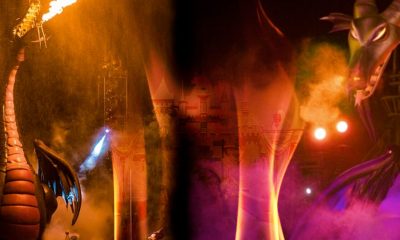

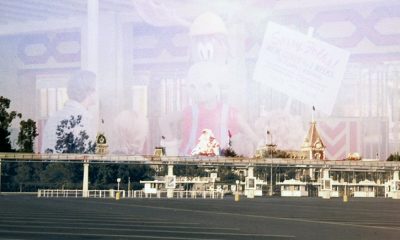

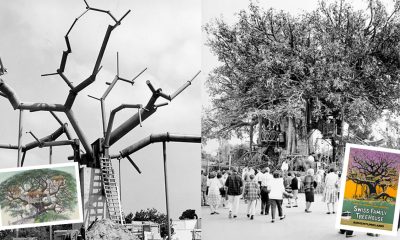









Craig Svonkin
February 24, 2023 at 8:45 am
I always thought that the solution might be to create a tiny but lovely little theater for Lincoln over Pioneer Mercantile (a large store, and thus one that could get smaller to allow for a ramp to a new second floor theater). Lincoln did travel west when young, and so an animatronic show about a younger Lincoln and the older Lincoln in a small jewel theater might work, and would free up the space at the front of the park for something more appealing (Muppets? a Mickey and Friends Vaudeville-style AA show?). Do you know, Jim, if there’s ever been such an idea floated?
Jim Hill
February 24, 2023 at 11:51 am
The issue here was always the concern that Orange County’s conservatives would reject any attempt to move Abraham Lincoln out of the Main Street Opera House. There were supposedly some discussion in the mid-1990s (After the Golden Horseshoe Jamboree Show closed back in December of 1994) of possibly moving the Lincoln AA figure over to Frontierland. But the problem with this idea was … Well, the Golden Horseshoe is a saloon. A place where people can buy sandwiches & drink Pepsi-Cola. And while Disney’s own research suggested that — while Lincoln was originally running for president back in 1860 — he undoubtedly gave his stump speech in lots of places that were just like the Golden Horseshoe … The thinking was — if Disney dared to move a pared-down version of “Great Moments” into this venue — it would then result in another round of bad publicity for the Company. With Orange County conservatives bombarding Disney Corporate with letters & phone calls, claiming that this change-in-venue was disrespectful to our country’s 16th President. So this idea never really got beyond the initial talking stage. Or so said veteran Imagineer Bruce Gordon. He shared this story with me almost 20 years ago, right after he left WDI to go work for Ron & Diane Disney Miller on the Walt Disney Family Museum project.
j
Craig Svonkin
February 27, 2023 at 9:53 am
Thanks for the info, Jim. I can’t see the show lasting another twenty years in the Opera House, frankly. It seems like Orange County’s demographics have changed, as has the Republican Party. With some Republicans openly talking about breaking up the union, perhaps Lincoln is no longer the guy for them?
I’d be in favor of a new patriotic show and Americana street to parallel Main Street (a street dedicated to five different American cities across the country, from San Francisco to Chicago to New York, etc.). Then, and I suggested this to Bob Weis six years back, hire Lin Manuel Miranda to write a Disney animatronic musical. It would be cool to have singing presidents, ala 1776, but with a contemporary score. Or maybe even better to have six or seven singing American heroes, people like Frederick Douglass, Elizabeth Cady Stanton, Harriet Tubman, Abraham Lincoln, FDR, Cesar Chavez, Walt Whitman, and Jim Henson, singing about their lives and what makes the USA still a hope for the world. Anyway, I’m just thinking out loud. I think that Disneyland could use a great patriotic show or film, but Lincoln just isn’t that anymore.